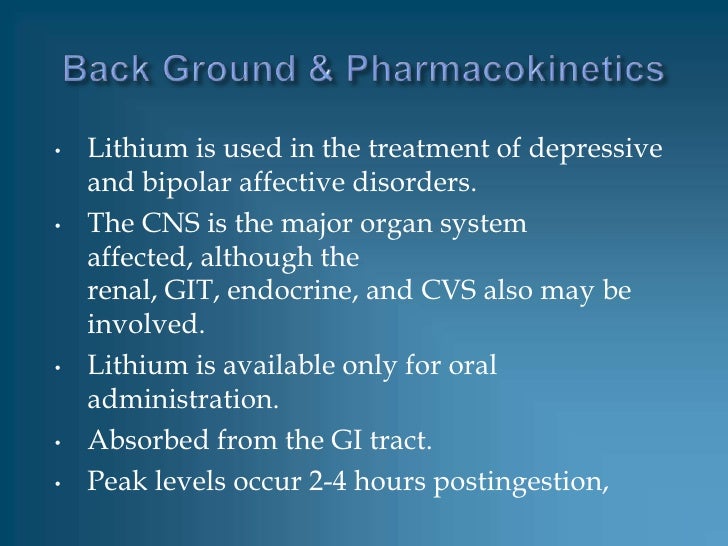
Outpatients and their families should be warned that the patient must discontinue lithium therapy and contact his physician if such clinical signs of lithium toxicity as diarrhea, vomiting, tremor, mild ataxia, drowsiness, or muscular weakness occur.

Lithium toxicity is closely related to serum lithium concentrations and can occur at doses close to therapeutic concentrations (see DOSAGE AND ADMINISTRATION).
Prianil CR® Extended-Release Tablets must be swallowed whole and never chewed or crushed. Accurate patient evaluation requires both clinical and laboratory analysis. Total reliance must not be placed on serum concentrations alone. Blood samples for serum lithium determinations should be drawn immediately prior to the next dose when lithium concentrations are relatively stable (i.e., 8-12 hours after previous dose). In general, dose selection for an elderly patient should be cautious, usually starting at the low end of the dosing range, reflecting the greater frequency of decreased hepatic, renal, or cardiac function, and of concomitant disease or other drug therapy. Geriatric patients often respond to reduced dosage, and may exhibit signs of toxicity at serum concentrations ordinarily tolerated by other patients. Patients abnormally sensitive to lithium may exhibit toxic signs at serum concentrations of 1.0 to 1.5 mEq/L. Serum lithium concentrations in uncomplicated cases receiving maintenance therapy during remission should be monitored at least every two months. Dosage will vary from one individual to another, but generally the following dosages will maintain this concentration:ġCan be administered on TID recommended dosing interval up to 1200 mg/day. Long-Term Controlĭesirable serum lithium concentrations are 0.6 to 1.2 mEq/L which can usually be achieved with 900- 1200 mg/day. 
Serum concentrations should be determined twice per week during the acute phase, and until the serum concentrations and clinical condition of the patient have been stabilized. Regular monitoring of the patient's clinical state and of serum lithium concentrations is necessary. Dosage must be individualized according to serum concentrations and clinical response. Such doses will normally produce an effective serum lithium concentration ranging between 1.0 and 1.5 mEq/L. Optimal patient response can usually be established with 1800 mg/day in the following dosages:ġCan also be administered on 600 mg TID recommended dosing interval.






 0 kommentar(er)
0 kommentar(er)
